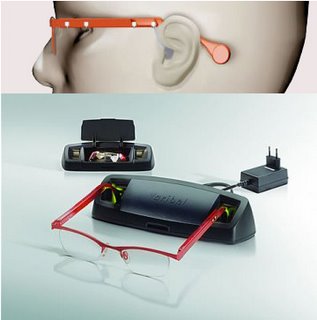ساخت عينكهايي كه كار سمعك را انجام ميدهند

دانشمندان هلندي موفق به ساخت عينكهايي شدهاند كه بسيار بهتر از سمعكهاي معمولي به حل مشكل ناشنوايي كمك ميكند.
به گزارش پايگاه اينترنتي لايوساينس، دانشمندان دانشگاه فناوري دلفت ميكروفونهايي را در دو طرف عينكها جاي دادهاند. اين عينكها كه به توليد تجاري رسيدهاند درحال حاضر مورد استفاده افراد قرار دارند.
اين عينك با نام Varibelسروصداي زمينه را كاهش ميدهد و بطور انتخابي صداهايي را كه از سمت روبرو ميآيد تقويت ميكند.
سازندگان اين عينك ادعا ميكنند ابداع آنها با حساسيتي دو برابر سمعك هاي معمولي صداهاي دلخواه را از صداهاي ناخواسته جدا ميكند.
براساس اعلام موسسه ملي ناشنوايي و اختلالات ارتباطي آمريكا از هر سه فرد بالاي ۶۰سال يكي مشكل شنوايي دارد.
سمعكهاي معمولي علاوه بر ظاهر نازيبايشان صداها را از هم جهات تقويت ميكنند كه اين امر گاهي اوقات تمركز كردن را براي افراد در گفت و گوهاي عادي دشوار ميسازد. اين امر باعث ميشود بسياري از اين افراد از محيطهاي اجتماعي كنارهگيري كنند و حتي
زودتر شغل خود را رها نمايند. اما با عينكهاي جديد صدا عمدتا از سمتي كه فرد به آن طرف نگاه ميكنند جذب ميشود.
كر استنگز كه در آزمايشهاي باليني اين عينك شركت داشته است ميگويد با اين عينكها كيفيت صدا بسيار بهتر ميشود
Varibel, the glasses that hear
Today a new hearing aid in the form of a pair of glasses was unveiled. These hearing-glasses are called 'Varibel' and offer older people the chance to stay active longer - free from the aesthetically unpleasing and technologically limited traditional hearing aids. Delft University of Technology in the Netherlands originally developed the hearing-glasses. Varibel developed these glasses into a consumer product in partnership with Philips, Frame Holland, the design agencies MMID and Verhoeven, and others.
Approximately 1,265,000 people in the Netherlands over the age of 60 are hearing impaired. Of these, half 22% (or around 275,000 people) use a hearing aid, but it is not always possible to hear others well if there is surrounding noise. Many hearing aids intensify sounds from all directions.
The result is that people hear noise, but not the people they are speaking to. Because people have such difficulty understanding what others are saying, many people - in spite of their hearing aid - have less social contact with others or must retire from their jobs earlier than desired. The hearing-glasses can provide a solution to this problem, say the experts and users who have tried and tested the Varibel.
The Varibel cannot be compared to traditional hearing aids. In each leg of the glass' frame there is a row of four tiny, interconnected microphones, which selectively intensify the sounds that come from the front, while dampening the surrounding noise. The result is a directional sensitivity of +8.2 dB. In comparison, regular hearing aids have a maximum sensitivity of +4 dB. With this solution, the user can separate the desired sounds from the undesired background noise.